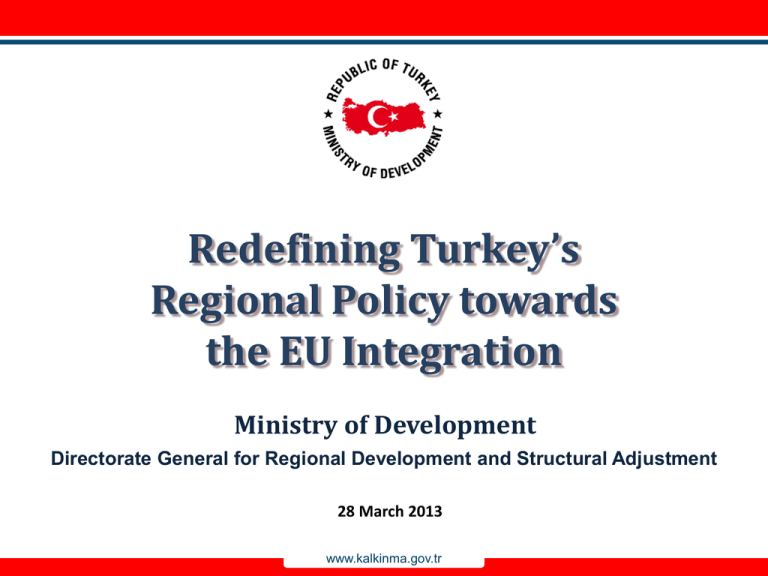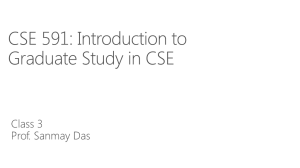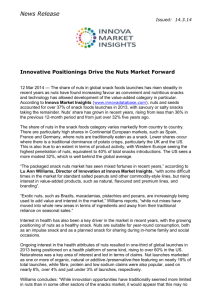PowerPoint Sunusu
advertisement

Redefining Turkey’s Regional Policy towards the EU Integration Ministry of Development Directorate General for Regional Development and Structural Adjustment 28 March 2013 www.kalkinma.gov.tr Outline Background Regional Policy Effects of EU Integration Conclusion Background İstanbul (18.689 US $) 4,3 times *Source: TURKSTAT - Per Capita Gross Value Added (2008) Van, Muş, Bitlis, Hakkari (4.379 US $) Regional Policy Decreasing the level of growth differentials caters for: – Sustaining growth performance – Ensuring equitable and inclusive growth Different problems, calling for customized solutions Complementary Evolution of Regional Policy Internal Dynamics – Ineffective conventional regional policy – Vibrant economy and dynamic society – Political priority External Dynamics – EU Accession process – Interaction of regions with the Globe Evolution of Regional Policy From Comprehensive public sector interventions Top-down Representation Self-sustaining Dependent Lagging behind regions To Endogenous growth with local strategic choices Bottom-up Participation Global competition Independent All regions Effects of EU Integration Crucial role on evolution of regional policies in the last decade – Learning Effect – Policy • Statistical Regions – a new basis • Multi-year Programming – a new approach • Governance-a priority principle – Implementation • Regional Development Programmes-a new tool • M&E Statistical Regions Statistical Regions Definition of NUTS regions Regions classified into 12 NUTS I, 26 NUTS II and 81 NUTS III regions – Enables a basis for regional development policies – Collection of regional statistics in line with EU statistics system – Programming base for EU co-funded regional interventions – Programming Documents Preliminary National Development Plan (2004- 2006) First multi-annual programming document providing the framework for EU funds on economic and social cohesion – Identified in its regional development axis for 12 priority regions – Basis for EU co-funded integrated regional development programmes implemented between 2004-2006 – Programming Documents Strategic Coherence Framework (2007-2013) – – – Multi-annual programming document providing the framework for EU funds on regional development and human resources development Thematic and geographical concentration for regional development interventions Basis for Operational Programmes; Regional Competiveness • Environment • Transport • Human Resources Development • Regional Development Programmes RDPs – Achivements Budget – EU Cont – TR Cont – Total 173 m € 39 m € 212 m € TR 18% EU 82% 9 NUTS II Regions - 33 Provinces 5,064 project application 1,428 awarded Trainings provided to 9,300 people in regions Outputs of EU Integration Tangible outputs of EU integration process on regional policy – Enhanced partnership on regional policy / programme formulation – Multiannual programming – Capacity building at central and regional/local level – Sound programme management – Project generation – Soft support mechanisms New Regional Policy Main Goals Principles Components – Strategy – Governance – Development Agencies Main Goals Dualize – Reduce regional and rural-urban disparities – Increase productivity and competiveness of regions Promote – Local dynamics and internal potential Principles Strategy Cooperation Governance New Regional Development Sustainability Competitiveness Components National Strategy for Regional Development Supreme Regional Development Council Regional Development Committee Development Agencies Strategy National Strategy for Regional Development – Setting spatial development perspectives – Drawing a general framework for programming and resource mobilization – Helping improve coherence among national, regional and local level plans – Laying out alternative development scenarios for regions Governance Supreme Regional Development Council Political Decision-making Prime Minister and Related Ministers Regional Development Committee Technical Consultation Undersecretaries of Related Ministries Governance Supreme Regional Development Council / Regional Development Committee – Strategic decision-making at national level – Ensure coordination at the local and central levels – Steer implementation of Regional Development National Strategy and regional plans – Harmonize sectoral, thematic and regional policies Development Agencies Development Agencies Support to articulate regional strategies Enhance cooperation among parties Support SMEs, new entrepreneurs, rural development, project development; M&E Improve project preparation capacity Promote business and investment facilities for the region One-window-shops DAs - Achivements Nearly 1.000 qualified staff 26 regional plans Financial Support Programmes – Over 20.000 applications to grant schemes – Nearly 5.000 projects awarded – Approximately 700 million € allocated for regional development – 100.000 man/days training Many analytical work, reports and research 81 Investment Support Offices – Consultancy to approximately 55.000 investors DAs - Achivements Bottom-up development in action: Feedback to drafting 10th Development Plan IPA – Regional Competitiveness OP – 12 project with a total budget 127 m € – HR Development OP – DAs are operation beneficiaries Future Current structures to serve as a basis for management and implementation structures for EU Cohesion Policy upon accession Multi-level governance – National – Supreme Regional Development Council / Regional Development Committee – Regional - Development Councils DAs will also have critical roles in – Programme implementation – Capacity building in regions Conclusion New perspectives and perceptions Improved governance and policy-making Novel instruments and methods of financing-the value of soft support Strengthened institutional and project management capacity at the local level Effective usage of pre-accession funds on economic and social cohesion Preparation for Cohesion Policy Instruments upon accession Paving the way to... «New Regional Development» Thank you Nahit BİNGÖL Director General Ministry of Development Directorate General for Regional Development and Structural Adjustment Necatibey Cad. No:110-A 06100 Yücetepe – ANKARA Tel: +90 (312) 294 50 00 • Faks: +90 (312) 294 69 77 E-posta: bilgi@dpt.gov.tr • Elektronik Ağ: www.dpt.gov.tr www.kalkinma.gov.tr











